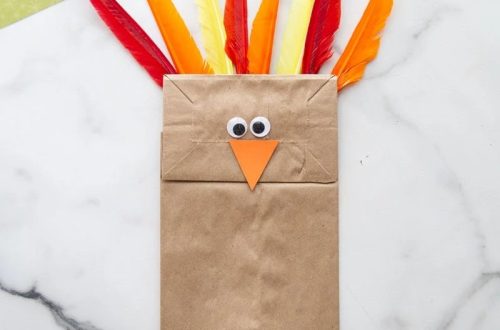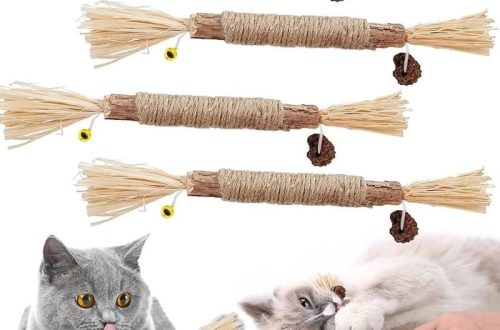Cats are natural hunters and explorers, always seeking new ways to engage their senses and minds. Interactive toys play a crucial role in providing mental stimulation, physical exercise, and overall well-being for our feline friends. In this expanded article, we will delve deeper into the world of interactive cat toys, exploring a wider range of options and providing additional insights into their benefits.
Part 1: Toys for the Hunter
Feather Wand Toys: A Classic Choice for Cats
Feather wand toys have long been a staple in cat-owning households. Their ability to mimic the movement of prey naturally triggers a cat’s hunting instincts, providing endless hours of entertainment.
There are many variations of feather wand toys available. Some feature feather-tipped wands that can be easily replaced, while others resemble fishing rods, allowing for greater control over the toy’s movement. For a truly interactive experience, consider toys with motorized movements that simulate the erratic movements of prey.
Hunting Games: A DIY Approach
To further engage your cat’s hunting instincts, create your own hunting games. Hide treats or toys around the house and encourage your cat to use their natural problem-solving skills to find them. This can be a great way to provide mental stimulation and exercise.
Puzzle feeders and treat-dispensing toys can add an extra layer of challenge to your hunting games. These toys require cats to use their paws and brains to access their rewards, providing a more satisfying experience.
By incorporating feather wand toys and hunting games into your cat’s playtime, you can help keep them mentally and physically stimulated. Remember, variety is key, so be sure to rotate toys and games regularly to prevent boredom.

Part 2: Toys for the Explorer
Puzzle Feeders: A Mental Challenge for Your Cat
Puzzle feeders are a fantastic way to keep your cat mentally stimulated and engaged. They require cats to use their problem-solving skills to access their food, providing a rewarding and challenging experience.
There are a wide variety of puzzle feeders available, catering to different levels of difficulty. Some options include sliding doors, rotating discs, and maze-like structures. For a truly challenging experience, consider using a combination of puzzle feeders to keep your cat guessing.
By incorporating puzzle feeders into your cat’s routine, you can help prevent boredom and encourage healthy behaviors. Additionally, the mental stimulation provided by puzzle feeders can help to reduce stress and anxiety in cats.
Scratching Posts and Towers: A Must-Have for Cats
Scratching is a natural behavior for cats, and providing them with appropriate scratching surfaces is essential for their well-being. Invest in a high-quality scratching post or tower that is tall enough for your cat to stretch fully. Look for models with multiple levels and platforms to provide ample scratching and climbing opportunities. Additionally, consider adding different textures and materials to the scratching surface, such as sisal rope, corrugated cardboard, or carpet, to cater to your cat’s preferences.
Part 3: Toys for the Curious
Interactive Balls: A Fun and Engaging Toy
Interactive balls are a popular choice among cat owners due to their versatility and ability to keep cats entertained for hours. They come in a variety of styles, including balls with bells, lights, or moving parts. Some interactive balls can even be controlled by remote control or your smartphone, adding an extra layer of excitement.
These toys can be used for both indoor and outdoor play. They can be thrown for your cat to chase, or they can be placed in a ball pit for your cat to explore. Interactive balls are a great way to encourage physical activity and mental stimulation in cats.
Treat Dispensing Toys: A Rewarding Experience
Treat dispensing toys are another excellent option for keeping your cat engaged. These toys require your cat to interact with the toy to release treats, providing a rewarding and challenging experience. They can be a great way to encourage mental stimulation and slow eating, especially for cats that tend to eat too quickly.
There are many different types of treat dispensing toys available, with varying levels of difficulty. Some toys require simple paw movements to release treats, while others involve more complex puzzles. By choosing a toy that is appropriate for your cat’s skill level, you can ensure that they remain challenged and motivated.
Incorporating interactive balls and treat dispensing toys into your cat’s playtime can help to keep them happy, healthy, and entertained. Remember, variety is key, so be sure to rotate toys regularly to prevent boredom.

Part 4: Toys for the Social Cat
Multi-Cat Toys: Promoting Harmony and Play
When you have multiple cats, it’s important to choose toys that encourage social interaction and minimize territorial behavior. Multi-cat toys are designed to provide ample space for cats to play together without feeling crowded or threatened.
Look for toys with multiple levels, hiding places, and scratching posts. These features will allow your cats to explore and play independently, while also providing opportunities for interaction. Some multi-cat toys even include tunnels or bridges that can be used for chasing or hiding games.
By providing your cats with appropriate multi-cat toys, you can help to foster a harmonious environment and prevent boredom-related behaviors.
Interactive Play Sessions: Strengthening Your Bond
Regular interactive play sessions are essential for maintaining a strong bond with your cat. Dedicate a few minutes each day to play with your cat, using a variety of toys and techniques.
Experiment with different play styles to keep your cat engaged. You can try chasing your cat with a wand toy, pouncing on a toy mouse, or batting at a ball. Pay attention to your cat’s cues and adjust your play style accordingly.
Interactive play sessions can also be a great way to socialize your cat, especially if they are shy or timid. By playing with your cat regularly, you can help them to become more comfortable with people and other animals.
Part 5: Additional Considerations

Cat-Safe Materials:
Ensure that all toys are made from non-toxic materials and are free from any sharp edges or small parts that could pose a choking hazard. Cats are naturally curious and may attempt to chew or swallow their toys.
To protect your feline friend, always choose toys made from safe materials. Avoid toys with small parts that can easily detach and be ingested. Additionally, inspect toys regularly for any signs of wear and tear, such as frayed cords or broken pieces, and dispose of them immediately if necessary.
Rotation of Toys:
To prevent boredom, rotate your cat’s toys regularly. This will keep them interested and engaged. Cats can quickly become accustomed to their toys, leading to boredom and decreased interest. By introducing new toys and hiding old ones, you can stimulate your cat’s curiosity and encourage them to explore their environment. A good rule of thumb is to rotate your cat’s toys every week or two to maintain their excitement and prevent them from becoming attached to any one toy.
Supervised Play:
Always supervise your cat while they are playing with toys. This will help to prevent accidents, such as swallowing small parts or getting tangled in cords. Additionally, supervising your cat allows you to ensure that they are enjoying the play session and are not experiencing any discomfort or distress. By being present and attentive, you can provide a safe and enjoyable play environment for your feline friend.
By providing a variety of interactive toys and engaging in regular play sessions, you can help your cat stay mentally and physically healthy. Remember to choose toys that are appropriate for your cat’s age, energy level, and personality. With a little creativity and imagination, you can create a stimulating and enjoyable play environment for your feline friend.




